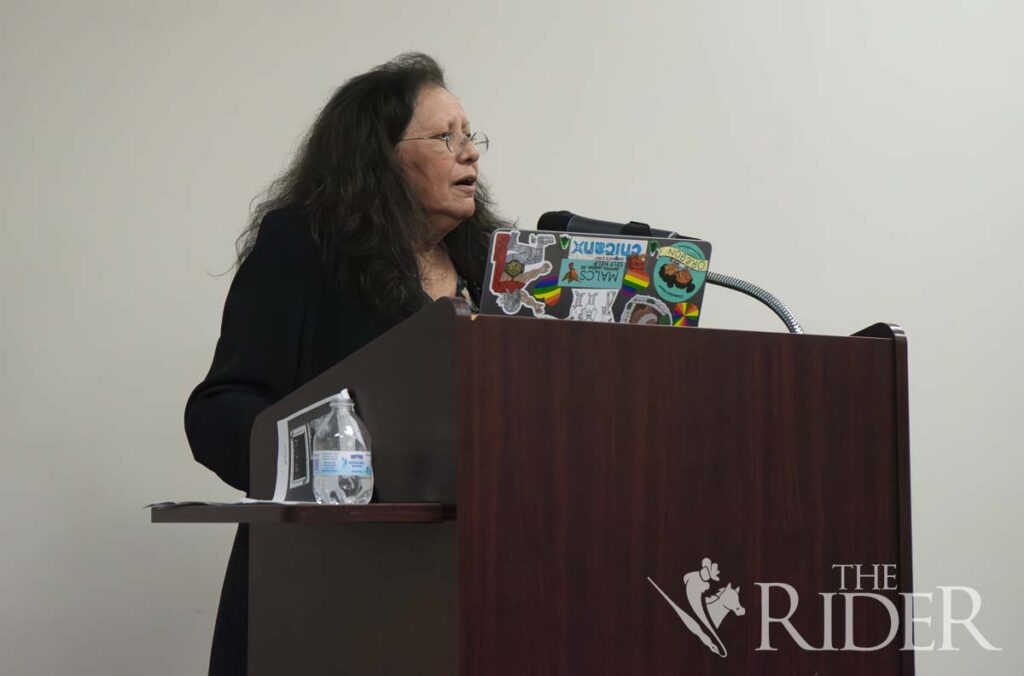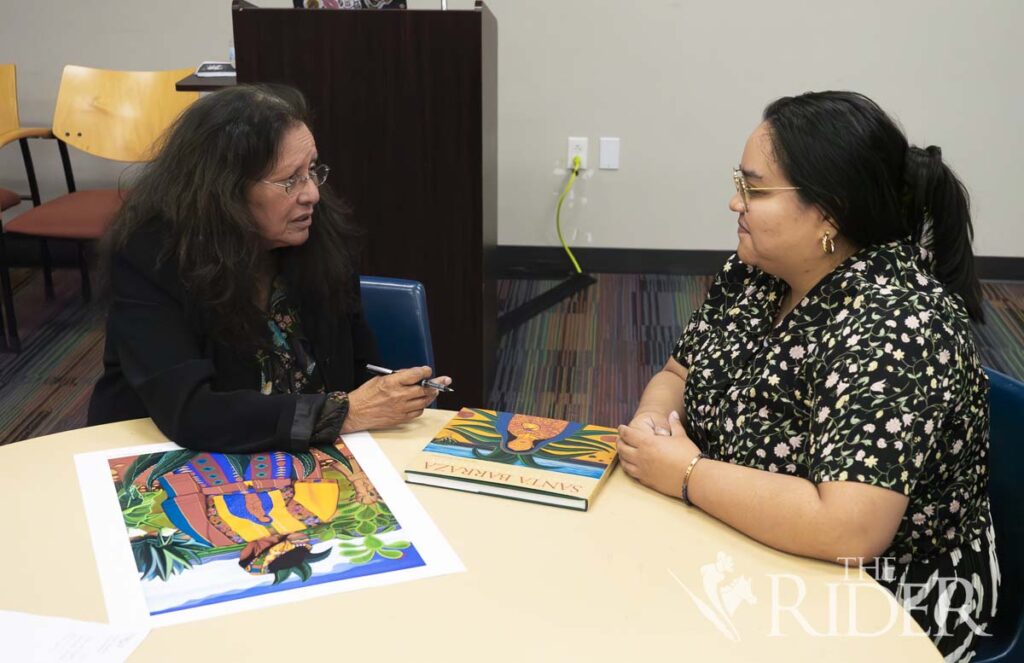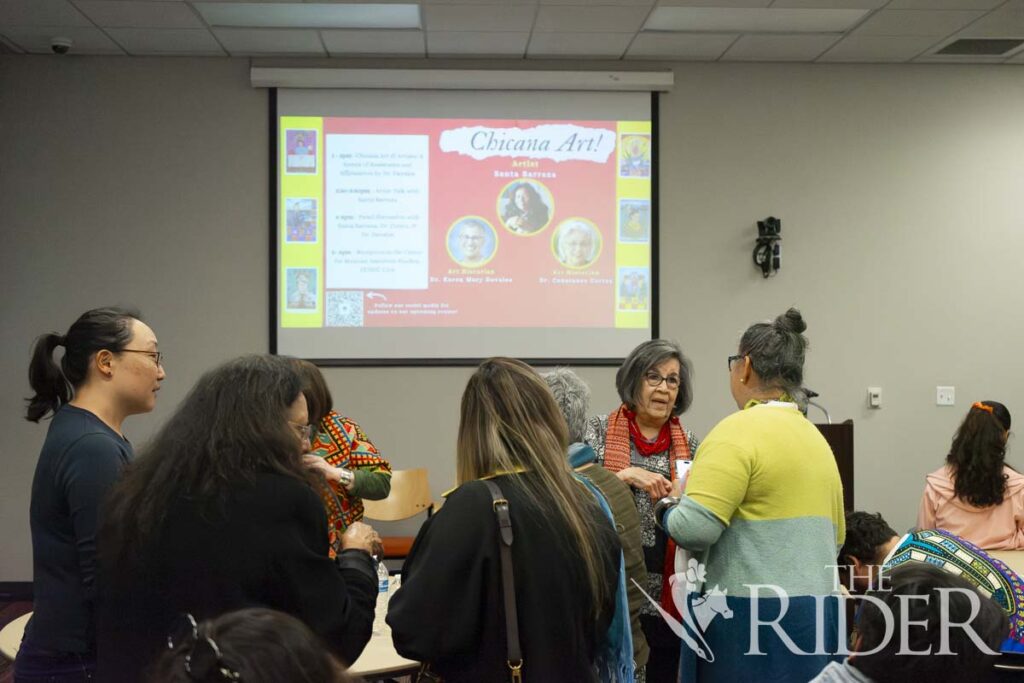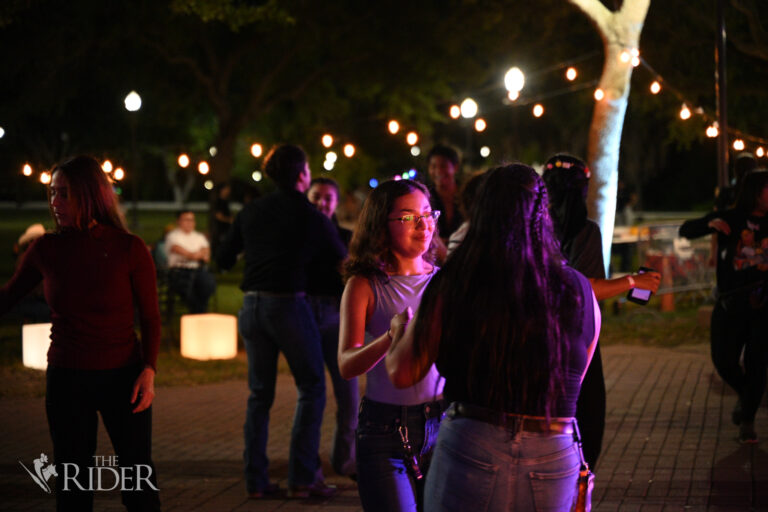The life of an icon
Young minds seldom have the chance to learn from an artist who has fundamentally challenged and changed the art institution, as Santa Barraza, a leading figure in Chicano art, has done.
In a rare opportunity, Barraza shared her experiences and insights during an artist talk March 27 in the Education Complex Borderlands Room on the Edinburg campus.

Eduardo Escamilla/THE RIDER
The talk was hosted by the Center for Mexican American Studies, the Center for Latin American Arts and the School of Interdisciplinary Programs and Community Engagement.
Based in Kingsville, she has been widely exhibited throughout the world. Barraza said her work will be featured in the upcoming exhibition, “Frida: Making of an Icon,” scheduled to open at the Museum of Fine Arts in Houston in 2026 before traveling to the Tate Modern gallery in London.
Her contributions to the art world have been recognized with numerous accolades, including the 2001 Southwest Book Award from the Border Regional Library Association for “Santa Barraza, Artist of the Borderlands,” published by Texas A&M University Press in 2001.

Eduardo Escamilla/THE RIDER
However, Barraza’s path to becoming an influential artist was not without significant obstacles, particularly as a female Chicana artist and student in the 1970s. During her time at the University of Texas at Austin, she said she faced isolation and a lack of representation.
“In UT Austin, there was hardly any Mexican American students,” she told the audience during her talk. “So, when I was there, I wouldn’t see another brown face for many, many months. So, I felt kind of, I was kind of, like, lonely.”
The sense of isolation prompted her to delve deeper into her ancestry.
“I’m very proud of my heritage but, unfortunately, I didn’t know about it until I went to college because my parents never talked about it,” Barraza said.
Finding limited resources on Mexican American artists, Barraza turned to photographers, such as Edward Weston and Tina Modotti for inspiration and historical context.
“And, particularly, Archivo Casasola because [it] documented the Mexican Revolution, which [my family] have a history in … so I wanted to document that,” she said.
In the 1970s, Barraza joined Los Quemados, a prominent Chicano art collective but grew frustrated by the male-dominated environment and resistance to include more women.
This led her, along with fellow artists Carmen Lomas Garza and Carolina Flores, to form Mujeres Artistas del Suroeste, a group that thrived from 1975 to 1985.
A pivotal moment for the group was the 1979 Conferencia Plástica Chicana in Austin, which brought together Chicano artists and scholars from both the United States and Mexico.

Eduardo Escamilla/THE RIDER
Barraza played a key role in enriching the conference by securing a photography exhibition from Manuel Álvarez Bravo, visiting the renowned artist in his studio in Mexico.
“It was [a] very exciting time,” she said.
Later, while working on a print project in New York City with Bob Blackburn, Barraza incorporated personal and feminist elements into her work, including stitching and images of their grandparents.
“I had these wonderful opportunities that I didn’t think were possible,” Barraza said.
As the talk concluded and my friend and I exited the room, we reflected on Barraza’s remarkable life. My friend wondered what gave her the courage to do everything she did, especially being a Chicana in the 1970s.
This prompted me to recall a moment Barraza shared from a presentation at the University of Colorado Boulder, where students asked how she was able to achieve everything she did.
“Because we were naive, we didn’t know you couldn’t do it,” the artist said. “So, we just got together and said we needed to do it. … I think that, when you have that spirit, you should do it.”






